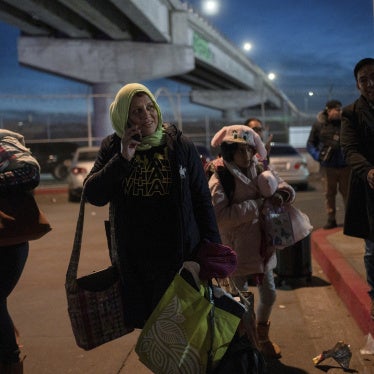A crowd quickly gathered when I arrived last month in what remained of the market in Mastaba, a small highway town in northern Yemen. A week earlier, on March 15, warplanes from the Saudi Arabia-led coalition had dropped two bombs there, killing perhaps 10 Houthi rebel fighters and at least 97 civilians, including 25 children. My questions, after a year investigating bomb sites and other alleged atrocities by both sides in Yemen, had become routine: Where did the bombs strike? What was damaged and destroyed? When I asked if any bomb remnants had been found, three men came forward with chunks of metal. As I pulled out a measuring tape, one asked, “Do you know what it is?”
US-made bombs, it turned out. Analysis showed that the remnants were from a GBU-31 satellite-guided bomb, which consists of a 2,000-pound MK-84 general purpose bomb and a JDAM satellite guidance kit. A couple of days earlier, a team from the British news channel ITV had visited the devastated market and had found remnants of another MK-84 bomb paired with a Paveway laser guidance kit. When and to whom the US provided them is uncertain.
The crowd in Mastaba, however, had already made up their minds about the bombs’ origins. A man who had lost 17 family members in the strike asked, “[w]hy did America kill my relatives?” Another wanted to know, “[w]ill the US government give us money to repair the remaining buildings and rebuild the market?” I only had questions, no answers.
The US has supplied weapons for airstrikes in Yemen and American forces have also provided the Saudi-led coalition with intelligence and aerial refueling support. Beyond these basic facts, we know too little about the US’s involvement in the airstrikes conducted by the coalition in Yemen that may have violated the law of armed conflict. Why do we need to know more? Because the nature of the US involvement determines whether the US is a party to the conflict – as a party the US is obligated to investigate alleged war crimes in which its forces took part. A general contribution, such as with financial assistance, weaponry or moral support, is insufficient. However, a country that plays a direct even if supporting role in military operations, including by providing intelligence used to strike targets or refueling planes on bombing missions, would become a party to the conflict.
Since the coalition began military operations on March 26, 2015, more than 3,200 civilians have been killed, about 60 percent from coalition air attacks, according to the United Nations. Airstrikes against the Houthis, an armed group from northern Yemen that took over much of the Middle East’s poorest country in late 2014, have repeatedly hit markets, medical facilities, commercial buildings, and residential areas. Sanaa’s Old City, a UNESCO World Heritage site in the capital, has not been spared. At least 15 attacks have used internationally banned cluster munitions in populated areas. The coalition has made no serious efforts to investigate alleged unlawful airstrikes, let alone punish those responsible or compensate the victims.
The Obama administration has largely been silent on the region’s most underreported armed conflict. When questioned about the US bomb remnants found at Mastaba, a spokesman for the US Central Command, Col. Patrick Ryder, said that “final vettings of targets” were decided by the Saudis. He expressed confidence that the information and support the US provided was “the best option for military success consistent with international norms and mitigating civilian casualties.”
These claims blur rather than clarify the US role in the fighting. Early on in the war, the US military said that it provided advice on specific targeting decisions and aerial refueling during bombing raids, actions that could make the US a party to the armed conflict under international law. Being party to the conflict has important implications. It means the US is obligated to investigate potentially unlawful attacks in which it took part — and that US military personnel involved could be subject to criminal prosecution for war crimes.
Little is known about the US contribution to specific, apparently unlawful, attacks, such as airstrikes on a power plant’s residential compound in July that killed 65 civilians, including 13 women and 10 children or on a hospital supported by Doctors Without Borders in October.
Whether or not the latest proposed ceasefire takes hold, the administration should come clean about the exact role the US is playing in the Yemen conflict as well as plans to provide new weapons to the Saudi-coalition. In November, the US signed an arms deal with Saudi Arabia worth $1.29 billion for more than 10,000 advanced air-to-surface munitions including MK84, laser-guided, and “bunker buster” bombs – the Saudis have used all three in Yemen. All sales should be suspended until the Saudis get serious about ending law of armed conflict violations.
The US is not the only country that has, over the years, supplied Saudi Arabia and other coalition members with bombs and other weapons, the United Kingdom and France, among others, have as well. But what stood out for me on this trip, my fourth to Yemen during the war, was how many ordinary people were blaming the “American coalition” and the “American aggression” for the deadly airstrikes.
This should be a reminder that the US government not only has to answer to the American people for its conduct in the war, but also to civilians who are being killed and maimed and whose homes and markets are being destroyed by US-supplied bombs.









